
Rolf Herman Nevanlinna was a Finnish mathematician who made significant contributions to complex analysis.

Ole-Johan Dahl was a Norwegian computer scientist. Dahl was a professor of computer science at the University of Oslo and is considered to be one of the fathers of Simula and object-oriented programming along with Kristen Nygaard.
BESM (БЭСМ) is the series of Soviet mainframe computers built in 1950–60s. The name is an acronym for "Bolshaya Elektronno-schotnaya Mashina", meaning "Big Electronic Computing Machine" or "High-Speed Electronic Computing Machine". It was designed at the Institute of Precision Mechanics and Computer Engineering
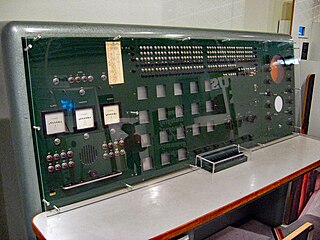
BESK was Sweden's first electronic computer, using vacuum tubes instead of relays. It was developed by Matematikmaskinnämnden and for a short time it was the fastest computer in the world. The computer was completed in 1953 and in use until 1966. The technology behind BESK was later continued with the transistorized FACIT EDB and FACIT EDB-3 machines, both software compatible with BESK. Non-compatible machines highly inspired by BESK were SMIL made for the University of Lund, SAABs räkneautomat SARA, "SAAB's calculating machine", and DASK made in Denmark.
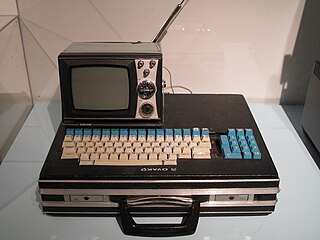
The Telmac 1800 was an early microcomputer delivered in kit form. It was introduced in 1977 by Telercas Oy, the Finnish importer of RCA microchips. Most of the 2,000 kits manufactured over four years were bought by electronics enthusiasts in Finland, Sweden and Norway.
The International Federation for Information Processing (IFIP) is a global organisation for researchers and professionals working in the field of computing to conduct research, develop standards and promote information sharing.
SARA was developed by SAAB when the capacity of BESK was insufficient for their needs. The project was started the fall of 1955 and became operational in 1956. SARA was built using the drawings of BESK that SAAB had bought for a symbolic sum and with the help of people who had worked with BESK, but didn't stay when Matematikmaskinnämnden decided that there would be no second generation. SARA wasn't used much, but it became the start of DataSAAB and the development of CK37 and D2.

The CDC 3000 series are a family of mainframe computers from Control Data Corporation (CDC). The first member, the CDC 3600, was a 48-bit system introduced in 1963. The same basic design led to the cut-down CDC 3400 of 1964, and then the 24-bit CDC 3300, 3200 and 3100 introduced between 1964 and 1965. The 3000 series replaced the earlier CDC 1604 and CDC 924 systems.
John Krogstie is a Norwegian computer scientist, professor in information systems at the Norwegian University of Science and Technology (NTNU) in Trondheim, Norway, and an expert in the field of enterprise modelling.
Colette Rolland is a French computer scientist and Professor of Computer Science in the department of Mathematics and Informatics at the University of Paris 1 Pantheon-Sorbonne, and a leading researcher in the area of information and knowledge systems, known for her work on meta-modeling, particularly goal modelling and situational method engineering.

Arne Sølvberg is a Norwegian computer scientist, professor in computer science at the Norwegian University of Science and Technology (NTNU) in Trondheim, Norway, and an expert in the field of information modelling.
Börje Langefors was a Swedish engineer and computer scientist, Emeritus Professor of Business Information Systems at the Department of Computer and Systems Science, Stockholm University and Royal Institute of Technology, Stockholm, and "one of those who made systems development a science."
Kari Onni Uolevi Karhunen was a Finnish probabilist and a mathematical statistician. He is best known for the Karhunen–Loève theorem and Karhunen–Loève transform.

The Chippewa Operating System (COS) is a discontinued operating system developed by Control Data Corporation in 1964 for the CDC 6600, generally considered the first supercomputer in the world. The Chippewa was initially developed as an experimental system, but was then also deployed on other CDC 6000 machines.
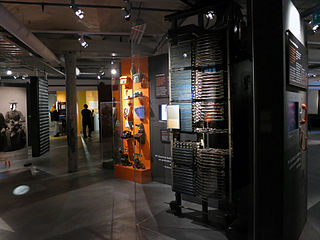
The Rupriikki Media Museum is a history museum devoted to mass communication. It is located in the Vapriikki Museum Centre, in Tampere, Finland. Rupriikki showcases media history. Collections include cellular phones, radios, telephones, computers, and press materials.
Janis Askolds Bubenko junior was a Swedish computer scientist and Professor Emeritus at the Department of Computer and Systems Science, Royal Institute of Technology and Stockholm University.
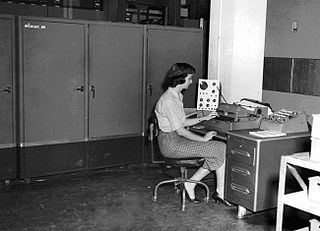
The ALWAC III-E was an early commercial vacuum-tube computer employing a rotating magnetic drum main storage unit, operational in 1955. It weighed about 2,200 pounds.
Susanne Bødker is a Danish computer scientist known for her contributions to human–computer interaction, computer-supported cooperative work, and participatory design, including the introduction of activity theory to human–computer interaction. She is a professor of computer science at Aarhus University, and a member of the CHI Academy.
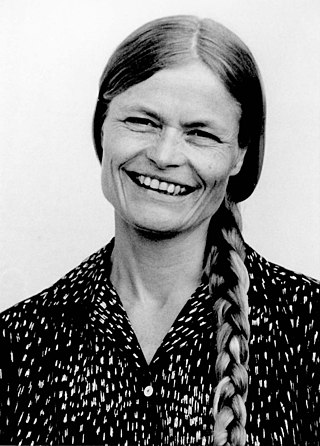
Drude Elisabeth Berntsen is a Norwegian computer scientist who was director of the Norwegian Computing Center from 1970 to 1990. It was unusual for a woman to hold such a high-ranking position at a time of male dominance in computing.
In computer architecture, 45-bit integers, memory addresses, or other data units are those that are 45 bits wide. Also, 45-bit central processing unit (CPU) and arithmetic logic unit (ALU) architectures are those that are based on registers, address buses, or data buses of that size.










